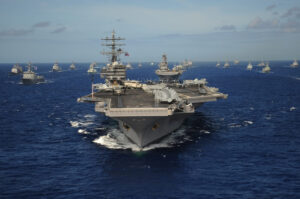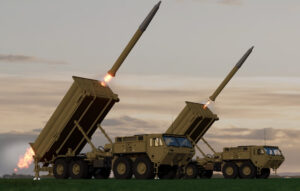The American writer and thinker Michael Lind thinks we ought to stop invoking the two world wars. For him, pointing to the appeasement of Hitler, or the stoutheartedness of Churchill or the Molotov-Ribbentrop pact – what Christopher Hitchens called the “midnight of the century” – just muddies the water. Our present conditions are different, says Lind. The upshot of making such comparisons is bad foreign policy.
He may well be on to something.
A client tells me that on his latest trip to Ukraine, he saw “a drone, entirely autonomous, flying around with an AK-47, hunting Russians.” We did not see that in 1914 or 1939. Though tanks and bombs and bullets might still exist, war on the whole looks very different – so different, in fact, that we might not even see it as such. Hence, why one might make a disquieting suggestion: That we – NATO, perhaps the West – are already at war.
Some are more sure of themselves. In June, the British government’s defense advisor Fiona Hill gave an interview in which she flatly said that Britain, and by extension our NATO allies, are at war with Russia, adding “that we’re in pretty big trouble.” Eliza Manningham-Buller, the former head of MI5, said in September that she broadly agreed, even if it was “a different sort of war.”
But that raises further questions. If it is so different, then – as The Week magazine asked its readers – how would we know that it had started?
Stepped-up espionage, military drills
Consider the facts. Russia has held military drills along the Polish border – drills sufficiently menacing to lead the Poles to scramble fighter jets. Russian drones are flying. Five men were convicted of arson for an attack on a warehouse in London that was ordered by Russia.
Cases of alleged Russian espionage abound. In Latvia, police detained a man for giving sensitive NATO information to Moscow. The Austrian company OMV sacked someone accused of spying for Russia. Six Bulgarians in Britain were jailed for running a network across Europe.
And these events took place before the British defense secretary noted a “30% rise in Russian vessels threatening UK waters.” Before the UK Space Command chief said the Russians were jamming British satellites on a “weekly” basis. Before alleged Russian election interference in Moldova and Romania.
Poisonings, cyber-attacks, sabotage of infrastructure – these have become so common it is increasingly hard to think that Russia is not at war with us, that war is not already here and unfolding in slow-motion.
Grey-zone aggression
But that is precisely what some are insisting.
The thinking goes that as long as NATO forces are not in open combat with Russia, we have not crossed the line. By that definition, what we are seeing remains “grey-zone aggression,” and the conflict in Ukraine remains a proxy war unless or until NATO hits Russia directly.
Both sides are keen to avoid a scenario that would kick off a full-blown war. And yet, as Manningham-Buller has noted, the current hostilities are “extensive.” The line between “proxy” or “hybrid war” and the real thing is getting uncomfortably thin, and the distinctions are starting to sound academic.
One wonders what will have to happen for the views of Hill and Manningham-Buller to go mainstream. Perhaps Putin will attempt a “limited cross-border move” – say, by going into the Baltics to “defend” ethnic Russians, to test NATO’s resolve. Or perhaps this string of aggressive moves, causing ever-tougher NATO talk and action, may suddenly coalesce into a bigger confrontation.
In any case, we must be clear-eyed. The thrust of Jonathan Schell’s Fate of the Earth, his book on nuclear war, is that we live with the knowledge of extinction hanging over us like a Damocletian sword yet think that everything will be all right.
Though Russia is testing a new nuclear-capable missile, “extinction” may not be the word for what we are facing. But the thin finger of something like a Doomsday clock still seems to be sweeping away the seconds, and we seem to think we have oodles of time to rearm.
NATO ammunition in short supply
NATO Secretary General Mark Rutte now says even if a deal is reached in Ukraine, Russia will remain armed, hostile and ready to strike NATO within five years. Though it could be sooner. Russia makes more ammunition in three months than what all of NATO makes in a year, Rutte says. Its war machine is in high gear, while we are only just getting started.
In Britain, we are not investing in the right way to rearm at the speed we need. It isn’t wise to assume we have years to catch up. And so while the claim we are already at war might seem premature, even irresponsible, accepting that this might be the case could be the fuel we need to rise to the challenge of the moment.







